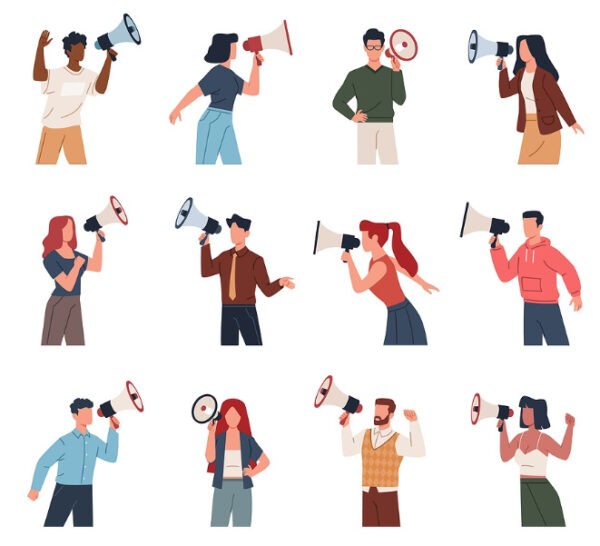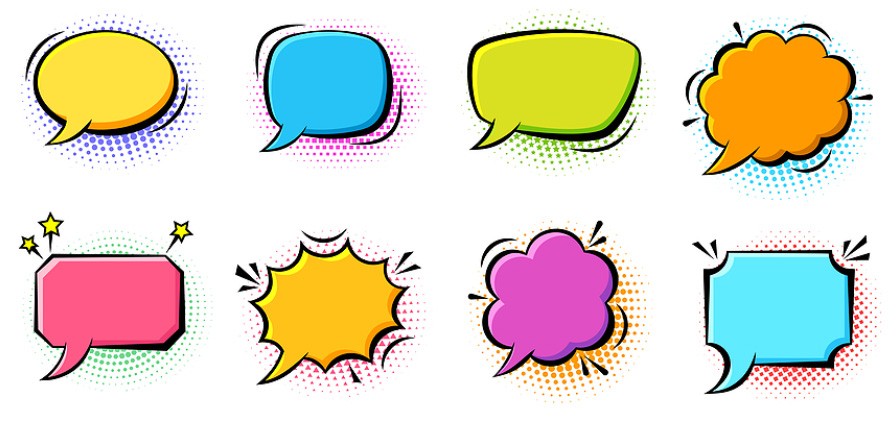🏢 9,000+ Organisations
🏆 6 x L&D/HR Awards
⭐ 4.8/5 Highly Rated
🧠 24 Years' Experience

Do you know the different styles of communication in your workplace?
Effective communication is essential in any organisation, but it’s important to recognise that different individuals have different communication styles.
Whether you’re a manager or a team leader, understanding the different communication styles can help improve your communication skills and enhance your workplace relationships. It’s an essential skill to have, and something we touch on within our Management Training.
From the assertive communicator to the passive listener, let’s dive into the diverse communication landscape of your office.

Whether in interpersonal encounters, or in formal meetings, we all have a typical style of communication, closely linked to our personalities. Knowing your typical workplace communication style, as well as that of your listener, can help you have more productive meetings. Take a look at these essential interpersonal skills for managers to find out how to communicate effectively.
Although we may be different in our encounters with different people, broadly speaking we tend to communicate in one of four main ways. We’ll outline these below.
There are broadly speaking four common workplace communication styles:
Let’s breakdown these four styles of communication and outline some indicators which may help you identify the kind of individual you’re dealing with (or modify your own behaviour if it’s not working for you).
The first style can often be mistaken for a lack of communication since these individuals often show few outward signs of their thinking processes. The passive communication style is often accompanied by a reluctance to participate in discussion, a desire to avoid conflict, and a reactive rather than proactive stance.
However, silence can sometimes speak volumes, so it can be very worthwhile drawing these individuals out.
Here are some of the key indicators of the passive style:
A passive communicator can be drawn out by actively soliciting their opinion, avoiding direct yes/no questions, preferring a one-to-one setting over a group meeting or allowing them to email their thoughts, rather than speak them aloud.
If you are a passive communicator, there are assertiveness training courses which may prove useful to help you build the necessary confidence to speak your mind. Don’t be overawed by the louder voices in the room either. Sometimes a softly spoken truth, clearly asserted, can carry more weight than any amount of bluster or emotion.
In complete contrast to the passive style, an aggressive communicator will often lead a discussion, offering their opinions loudly without them being requested. Sometimes they can be overbearing, excessively domineering, or even threatening.
This type of communication can cross boundaries, cause offence, and dissuade shyer team members from contributing to a conversation. These individuals may prioritise their own feelings over those of others.
In some leadership settings, this type of communication can cut through stalemate situations, but it can also cause resentment and breed resistance if left unchecked.
Here are some of the key indicators of the aggressive style:
An aggressive communicator may have to be assertively reigned-in, if they are not to excessively dominate an encounter. Don’t be afraid to do this – it’s hard to hurt the feelings of this type of communicator!
If you find yourself behaving aggressively in a workplace setting, then anger management or communication skills courses may help moderate such outbursts.
We’re all aware of someone who manages to signal their disapproval powerfully without saying much, by using covert methods, or negative body language to undercut a speaker. This is the passive-aggressive communicator.
They are passive because they make no large outward show of disagreement, but aggressive, because their aim is to undermine what’s being said.
Here are some likely indicators of a passive-aggressive communicator:
This type of individual can be very disruptive since they may work to undermine a meeting or encounter without contributing anything positive. They can also draw attention away from a speaker, since people are naturally intrigued to work out what passive-aggressive people are thinking.
To deal with such an individual it helps to clearly request their honest opinion, and to maintain discipline and etiquette in a meeting. Any negative or disruptive behaviour should be dealt with promptly, either as soon as it occurs, or later, in a one-to-one with management.
If you feel tempted to behave this way, resist the temptation. Instead, honestly and politely express your reasons for disagreement, or request a one-to-one if your input could derail a meeting.
Perhaps the most helpful form of interpersonal communication is the assertive style. This individual is willing to express their honest opinions, but they do so in an appropriate and timely manner. They do not attempt to subvert a meeting, whilst listening and responding politely to the contributions of others.
This type of communicator isn’t perfect, and can sometimes shade into passive or aggressive behaviour, but more often than not, they judge their level of contribution well.
Here are some of the communication style indicators to look for:
This is a good type of communication style to adopt in most situations. If this is you, congratulations! However, watch out for those moments when you’re tempted to be more aggressive, or sink into passivity.
When you encounter this type of communicator, they may be a useful ally. They may also be a good candidate for more responsibility, and a helpful mediator in workplace conflicts.
Do you feel like you fit into any of these 4 main categories? Do you want to understand more about communication? We cover the importance of effective communication and influence amongst other key management skills in our Essential Management Skills Course.

The above four styles of communication centre on the individual’s emotional expression and affect. There are other ways to describe communication styles, which centre on the type of thinker an individual is, and how they communicate their ideas.
This framework was first devised by bestselling author and leadership expert Mark Murphy, and outlined in a Forbes article in 2015. The four styles are:
These are modes which again align with personality, in general. However, it’s possible to train yourself to slip between modes of communication, depending on the circumstance.
Let’s dig into those terms a little deeper.
This individual prefers to deal with hard facts and figures than gut feelings and instincts. They prefer to discuss processes and plans, and dig into the details, rather than take an overview.
If you’re an analytical communicator, you’ll be good at taking a dispassionate look at a subject, but may be less able to interpret emotional situations. Try our FREE Emotional Intelligence Assessment to see where you fall on the scale.
An analytical communicator is likely to be employed in an IT or data analysis role than a human resources one, for instance.
Conflict can occur when a person with this communication style must work alongside an individual with a more personal style of communication. It’s as if they are talking past one another since each has a different area of interest.
Here are some of the common traits of an analytical communicator:
However limited this type of communication can prove when talking about experiential or emotional topics, it can prove invaluable when preparing reports, making a case to stakeholders or preparing analytics.
Aligned to the analytic style of communication is the functional style. This individual is also process and plan-orientated, but they achieve an overview by proceeding step-by-step. This individual is methodical and gathers data before acting. They are excellent at adhering to deadlines and budgets, and are often the person that management turns to for implementation.
The functional communicator can also prove limited when it comes to dealing with more subjective or emotional factors, but may also collide with the analytical thinker, who can become bogged down in the details.
On the plus side, a good functional communicator can sometimes act as a bridge between the analytic and personal styles of communication. Furthermore, they will derive actionable insights from their analysis. As such, they can be a very good addition to a highly heterogeneous team.
Here are some of the common traits of the functional communicator:
The intuitive communicator is the stereotypical “gut thinker.” They tend to come to an immediate conclusion but may struggle at first to justify it. “Trust me” may be a common refrain.
They love “thinking outside the box” and can be bold and innovative. The flipside, of course, is that they can be spectacularly wrong from time to time. A good intuitive communicator will know how frequently their sudden insights are helpful and adjust their enthusiasm accordingly. A bad one may derail a process through impatience and impetuousness.
Innovators or entrepreneurs are often intuitive communicators, but they often need to partner with a more methodical thinker to temper their more destructive traits.
Here are some of the common behaviours of the intuitive communicator:
When such individuals succeed, you get Steve Jobs or (at his best) Elon Musk. When they fail, they can cause significant corporate harm. Therefore it is essential to surround such a communicator with more risk-averse and methodical thinkers.
Innovative, mould-breaking companies are often led by such people, who can also tend towards the narcissistic and unempathetic.
The last communication type is the worker who prefers a collaborative approach. They highly prize person- and emotion-centred methods. They tend to favour a personable approach to communication, involving their whole team and preferring informality over hierarchy.
Colleagues tend to like these individuals and want to impress them, which can give the personal communicator additional leverage. They are empathetic and cautious, methodical, and inclusive.
This type of individual can rub more analytic or functional thinkers the wrong way, by being too “touchy-feely,” and they may not prove as popular in a more “dog eat dog” working environment.
Here are some of the common traits to look for:
A personal communication style is great for spokespeople, politicians, HR professionals and salespeople, since these roles require an individual to be empathetic, likeable, trustworthy, and convincing.
These communicators aren’t as good at cutting to the chase, or taking difficult decisions which may negatively impact others. If taking a leadership role, personal communicators may require a more hard-nosed consigliere to help them take challenging decisions.

Nothing in this article is intended to suggest that any one style of communication is better than any other. There’s a place in every workplace for the detail-focused analyst and for the person-centred collaborator. It’s simply a matter of finding an appropriate role.
When engaging in project work, it can be invaluable to have multiple approaches to a task. Different personalities can act as a system of checks and balances to one another’s excesses.
Here are just some examples of how each communication type can be invaluable:
So long as you appreciate both the limitations and advantages of each communication style, and work to temper your own excesses, a variety of communication styles is beneficial.
If you believe you may exhibit one of the above styles excessively, or you’d like to develop a different style, all is not lost!
There are numerous books on how to develop aspects of your communication skills. Here are just a few of them:
There are also numerous online courses on relevant topics such as:
Each of these courses (and numerous more) will touch upon important aspects of interpersonal communication. You can also find out the differences between Communication Skills vs. Interpersonal Skills over in our blog.
Communication is a universal human activity that everyone does differently, dependent upon their core personality traits. However, effective communication entails skills which can be learned or improved.
And that’s where MTD training can help. Communication tips and skills feature on several of our Management and Leadership Development Programmes.
Get in touch today to find out more.

Written by Sean McPheat
CEO of MTD Training and Amazon bestselling author. Sean writes about leadership, business, and personal growth, drawing on 20+ years of experience helping over 9,000 companies improve performance.
Updated on: 27 July, 2023
Related Articles

Search For More 